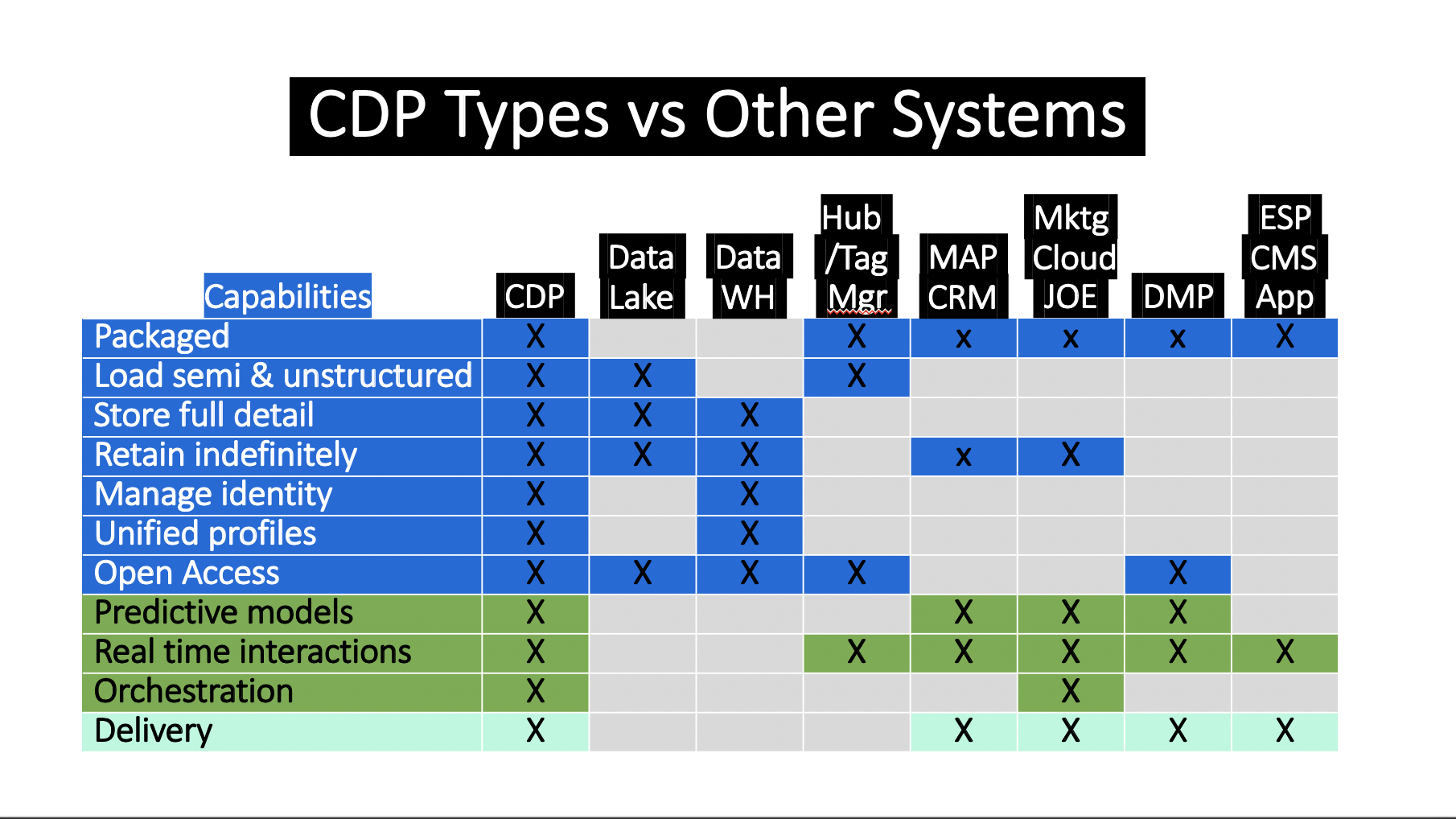CDP, DMP, Data Lakes - What The What?
Do you understand all the TLAs (Three Letter Acronynms) in MarTech?
Here’s an explanation of CDP, DMP and Data Lake with analogies.
A CDP is like having friends in your home. You know exactly who they are (customers) and you've interacted with them for years so you know what they like and you plan your party accordingly.
A DMP is like walking into a bar and chatting up with people you've never met (prospects) so you may not know their name or anything about them. Some of them will become your friends (customers) and they move from the DMP to the CDP. Some you might just wave hi to the next time you are at the same bar so they stay in the DMP (remarketing).
A Data Lake is the bar. It's a container and cannot tell you anything meaningful by itself.
More seriously:
A CDP is first party data focused in that it builds unified profiles and identity resolution is a key feature. So it enables a Single Customer View. This also enables predictive models, real-time interaction and orchestration through the funnel. Data is stored persistently.
A DMP is useful for third party data and ad campaigns but not for the entire funnel. Data is not stored persistently.
A Data Lake stores raw, unprocessed data.
From the legendary David Raab of The CDP Institute, this chart illustrates how all these systems are different from each other:
In his words:
Every system is optimized for its purpose. Only CDP is optimized for unified, complete, sharable customer data.
The CDP Institute defines a CDP as follows:
"A Customer Data Platform is packaged software that creates a persistent, unified customer database that is accessible to other systems".
This definition has three critical elements:
- "packaged software": the CDP is a prebuilt system that is configured to meet the needs of each client. Some technical resources will be required to set up and maintain the CDP, but it does not require the level of technical skill of a typical data warehouse project. This reduces the time, cost, and risk and gives business users more control over the system, even though they may still need some technical assistance.
- "creates a persistent, unified customer database": the CDP creates a comprehensive view of each customer by capturing data from multiple systems, linking information related to the same customer, and storing the information to track behavior over time. The CDP contains personal identifiers used to target marketing messages and track individual-level marketing results.
- "accessible to other systems": data stored in the CDP can be used by other systems for analysis and to manage customer interactions.
Here’s another chart that illustrates the differences in another way. Unfortunately, I don’t have the source. If you do, please share it and I will credit.
Let’s talk about a CDP some more. You need other tools in your stack to use data from the CDP for orchestration, personalisation, marketing automation. But what you do get is the ability to capture unified data, understand the lifecycle, manage data governance and compliance.
Does this sound too good to be true? It's really a question of understanding that investing in a CDP is not the end game.
When thinking about the investments, you also need to factor in the following:
1. First-party data can become obsolete so maintaining data quality requires resources. Identity is only as good as the quality of data.
2. How does the rest of your stack work with the CDP? Most large cos have legacy systems and cloud solutions already in play.
3. What are the use cases, where are the gaps and is the CDP removing the gaps?
It's a strategic decision that needs to be taken now.
Contact me to talk about the right MarTech solutions for your business.


